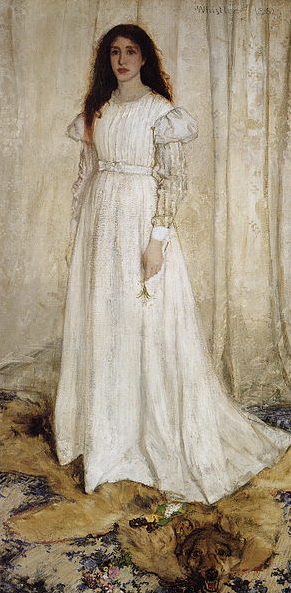Titanium White is currently by far the most popular of the oil painting Whites and has approximately twice the covering power of Lead White. By 1945 it accounted for more then 80% of the market.
Most paint manufacture’s Titanium white also contain Zinc White. Zinc White is more inexpensive than Titanium and adding Zinc white to Titanium makes it more viscous, which can allow for more viscosity, and lessens the tinting strength.
Titianuim White (titanium dioxide,PW6) is probably the most well-known and widely used white oil paint today. Titanium is a very opaque and stiff white. It also is very powerful in its tinting strength, which can wash out colors it is mixed with. Titanium white is somewhat cool in color but not as cool as Zinc White.
Zinc White (zinc oxide,PW4) and was developed in the late 18th century. It is translucent, about 5 times less then Titanium white, and has a low tinting strength. Zinc is much cooler then titanium.
Lead White (basic lead carbonate PW1 ) (Cremnitz White and Flake are also lead whites) the oldest of the three types of white, around 400 B.C. Almost all Oil painters used Lead White before 1916 when Titanium white was developed and when Lead Whites poisonous content restricted its manufacture and sale. Lead white dries the fastest of all whites, which makes it valuable for painters who need a relatively fast drying time for underpainting or Allla Prima techniques. Lead white is very dense and has a warm reddish-yellow undertone. It is structurally the strongest white and is almost always mixed with zinc white.
Lead white is very dangerous and should not be eaten or come in contact with your skin or eyes just like most of the oil colors we use to paint with. James Abbott McNeill Whistler (1834-1903) actually became sick from lead poisoning after prolonged work on his painting “Symphony in White” in his Paris Studio. (Whistler a Biography, Weintraub)
Unbleached Titanium or Titanium Buff (PW6) is Titanium dioxide just processed differently then Titanium white. Buff titanium is made from titanium pigment heated to high temperatures with a larger pigment particle size; this shifts the color toward a grayed, pale coffee brown. I like to use this white to lighten a color just a little bit, it doesn’t overdo it the way adding straight Titanium White can. Some Artists only use Titanium Buff to lighten their pigments.
Not all paint manufactures produce Unbleached Titanium this way. For example Utrecht adds Zinc White (PW4) and Raw Umber (pbr7) to Titanium white to create their Unbleached Titanium.
